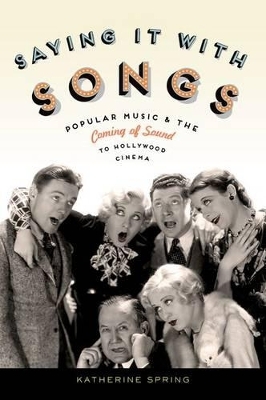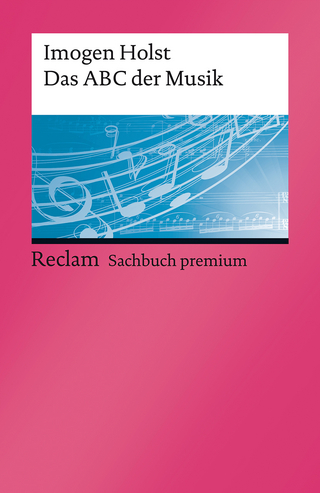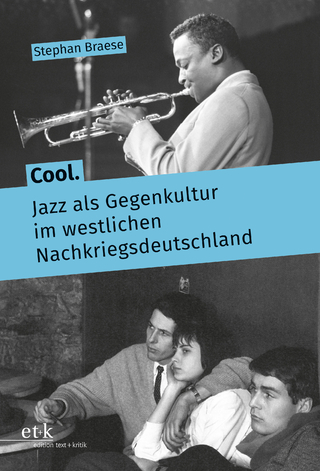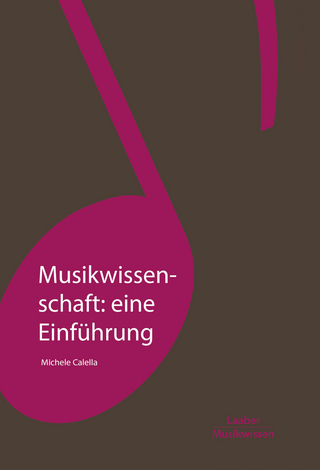
Saying It With Songs
Oxford University Press Inc (Verlag)
978-0-19-984222-3 (ISBN)
In the late 1920s, Hollywood's conversion from silent to synchronized-sound film production not only instigated the convergence of the film and music industries but also gave rise to an extraordinary period of song use in American cinema. Saying It With Songs considers how the increasing interdependence of Hollywood studios and Tin Pan Alley music publishing firms influenced the commercial and narrative functions of popular songs in a variety of film genres. Whereas most scholarship on film music of the period focuses on adaptations of Broadway musicals, Saying It With Songs examines the functions of songs in a variety of non-musical genres, including melodramas, romantic comedies, Westerns, prison dramas, and action-adventure films, and shows how filmmakers tested and refined their approach to songs in order to reconcile the tension produced by three competing forces: the spectacle of song performance, the classical norms of storytelling, and the established conventions of background orchestral scoring inherited from the period of silent cinema. By 1931, a so-called "song glut" led the studios to curtail their use of popular music in favor of a growing alternative -- the classical film score -- but popular songs continued to fulfill critical functions of narration in Hollywood films of subsequent decades. Written in language accessible to film and music scholars as well as general readers, Saying It With Songs illuminates the seminal origins of the popular song score aesthetic of American cinema.
Katherine Spring is Associate Professor in the Department of English and Film Studies at Wilfrid Laurier University in Ontario. Her articles on film music have appeared in Cinema Journal, Film History, and Music and the Moving Image. The recipient of a development grant from the Social Sciences and Humanities Research Council of Canada, she is presently undertaking a study of film music in contemporary Hong Kong and Hollywood cinemas.
Acknowledgments ; Introduction ; Chapter 1. Singing a Song: The Culture and Conventions of Popular Music in the 1920s ; Chapter 2. Owning a Song: The Restructuring of Hollywood and Tin Pan Alley ; Chapter 3. Plugging a Song: The Discrete Charm of the Popular Song, From Broadway to Hollywood ; Chapter 4. Integrating a Song: The Threat to Narrative Plausibility ; Chapter 5. Curtailing a Song: Toward the Classical Background Score ; Conclusion: The Fate of the Motion Picture Song ; Appendix 1: Confirmatory License Issued by Music Publishers Protective Association (1929) ; Appendix 2: "Tieups of Film and Music" as Reported by Variety ; Appendix 3: Timeline of Relationships Between Film and Music Companies ; Appendix 4: Agreement between Al Dubin, The Vitaphone Corp., and Music Publishers Holding Corporation ; Appendix 5: Summary of Agreement between Vitaphone Corporation, M. Witmark & Sons, and Ray Perkins ; Bibliography ; Credits ; Index
| Erscheint lt. Verlag | 28.11.2013 |
|---|---|
| Reihe/Serie | Oxford Music/Media Series |
| Zusatzinfo | 28 illustrations |
| Verlagsort | New York |
| Sprache | englisch |
| Maße | 234 x 157 mm |
| Gewicht | 380 g |
| Themenwelt | Kunst / Musik / Theater ► Film / TV |
| Kunst / Musik / Theater ► Musik ► Musiktheorie / Musiklehre | |
| ISBN-10 | 0-19-984222-1 / 0199842221 |
| ISBN-13 | 978-0-19-984222-3 / 9780199842223 |
| Zustand | Neuware |
| Haben Sie eine Frage zum Produkt? |
aus dem Bereich


